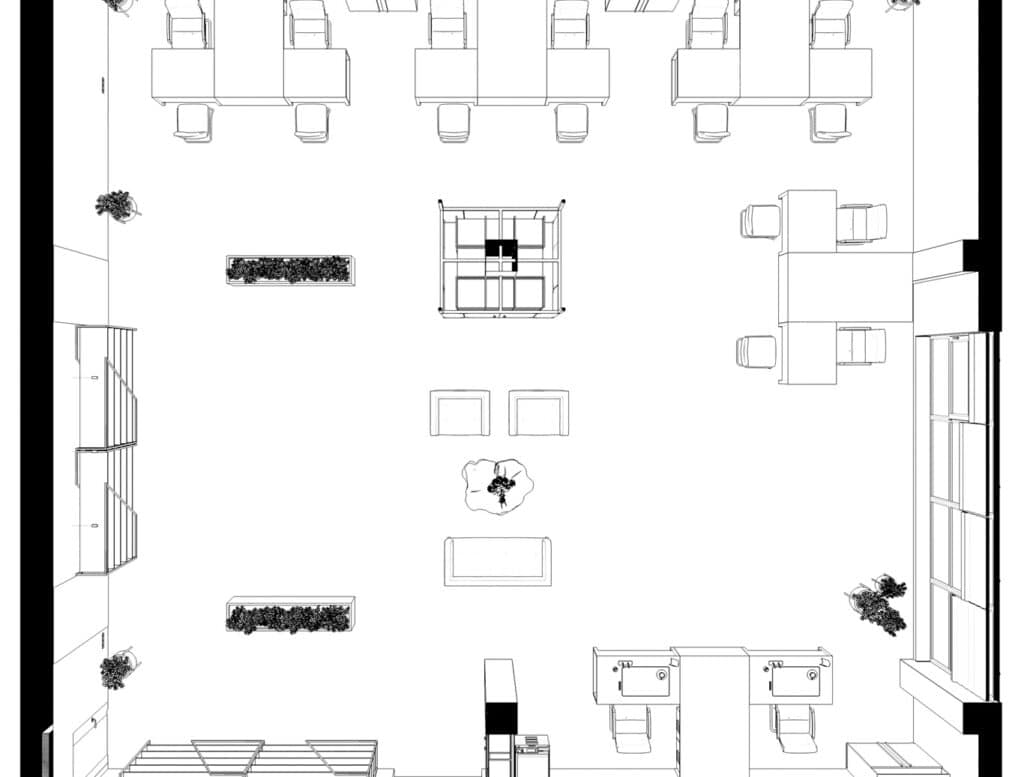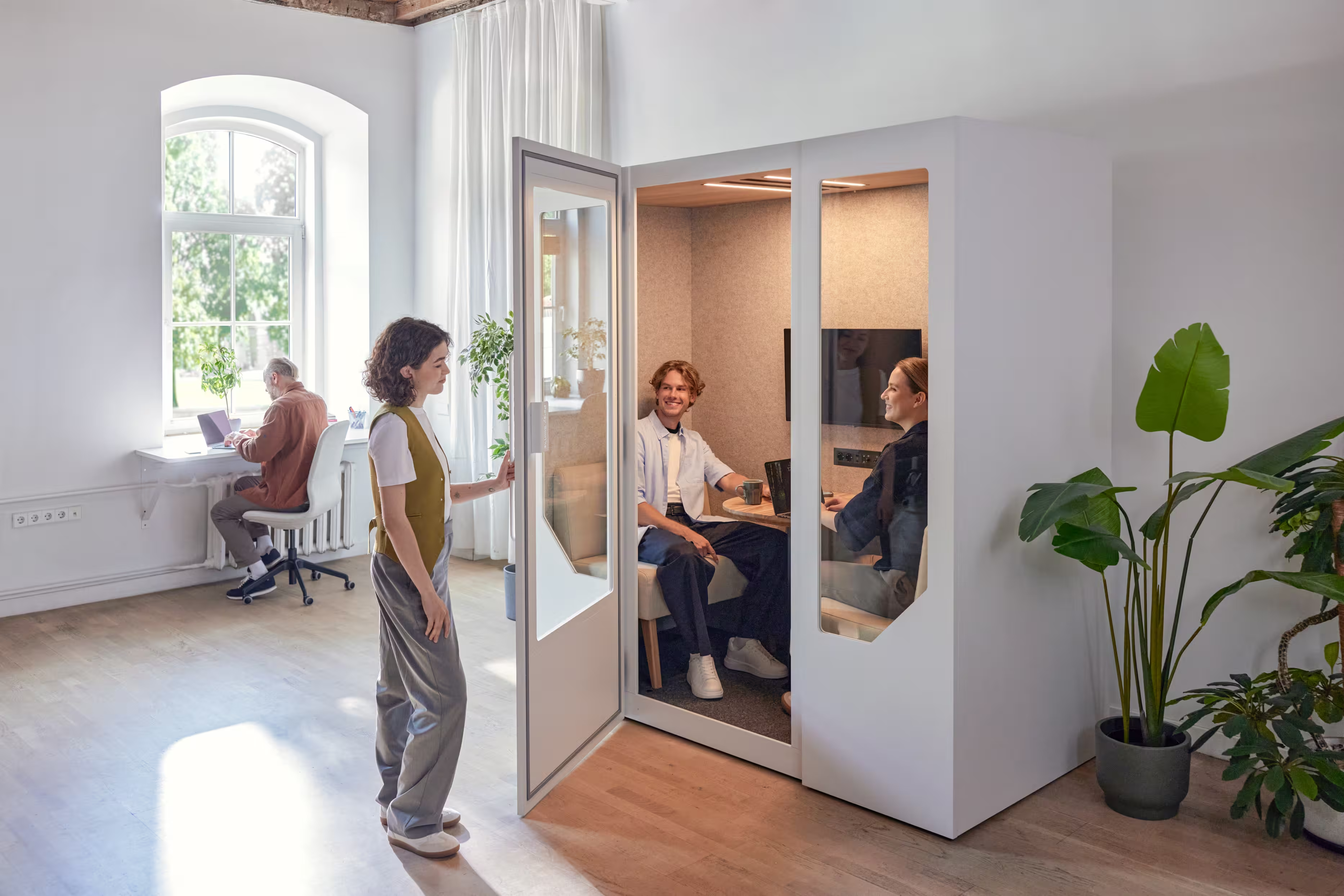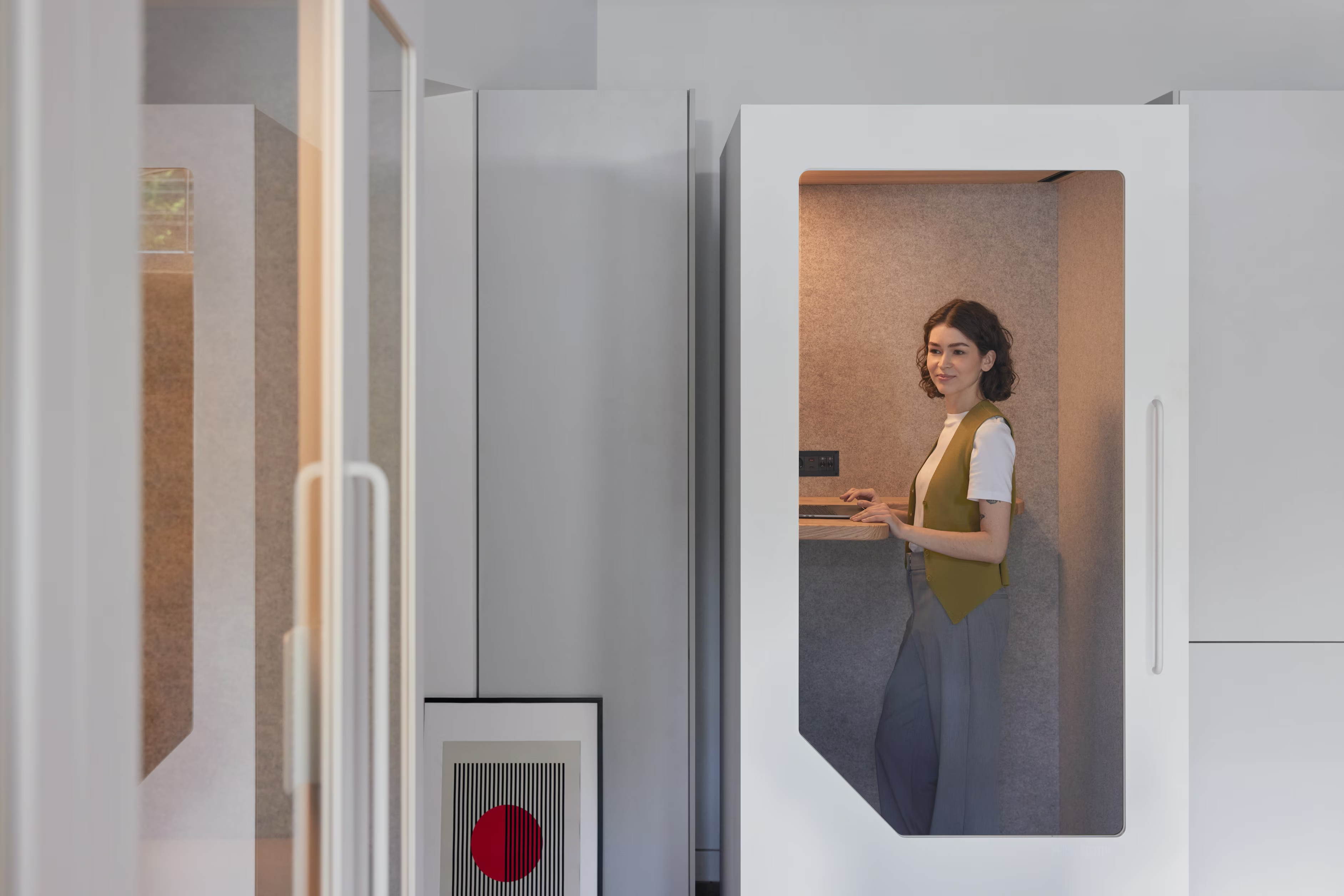In today’s world, office space isn’t just about desks, walls, and meeting rooms. It’s about creating environments where people can collaborate, focus, and feel inspired — all while controlling costs.
Workspace optimisation has become a strategic priority for many Persy Booths customers, so we thought we would summarise some of the advice we give them to balance productivity, employee satisfaction, and real estate efficiency.
Key Takeaways from This Article:
- How to make smarter, data-driven decisions about space utilisation.
- Why employee satisfaction should guide office space optimisation.
- Practical ways to cut operational costs without reducing comfort.
- Which tools and strategies can help businesses optimise office space effectively.
- Why buying direct from honest, helpful suppliers delivers the best results.
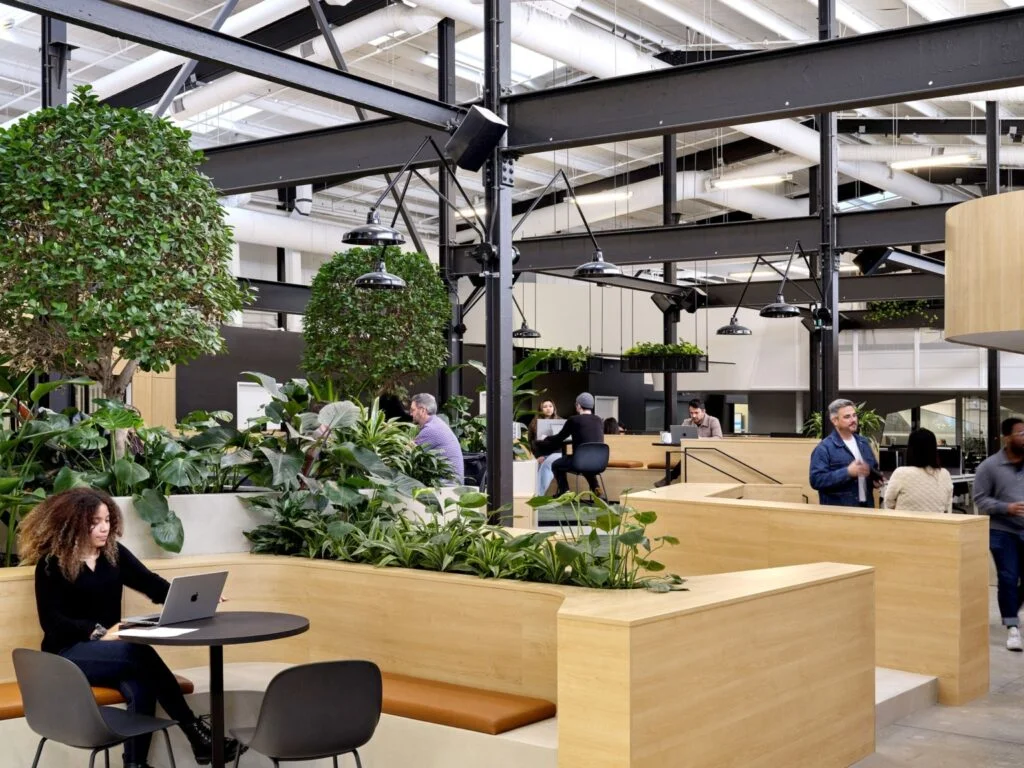
Why Office Space Optimisation Matters
Optimising office space is no longer a luxury — it’s a necessity. Businesses are under pressure to manage costs, enhance collaboration, and adapt to hybrid and remote work patterns. The right office space optimisation strategy can make all the difference, improving operational efficiency, employee productivity, and overall organisational growth.
A well-optimised office environment drives measurable results. According to JLL’s 2025 global workplace report, companies are increasingly taking a data-driven approach to optimising their physical environments, with global office utilisation now averaging 54% — up from 50% in 2024. That reflects a growing reliance on data to balance cost, flexibility, and employee experience.
At the same time, cost control remains critical. Over-spending on high-end installations — like luxury soundproof booths or overdesigned breakout areas — can backfire if those areas aren’t fully used. The most successful companies find balance by investing wisely in flexible, functional solutions that employees actually need.
A great example of practical workspace design can be seen in our coworking space hacks guide — wherwe describe how multipurpose zones can combine privacy with collaboration, and comfort with efficiency.
Adapt Your Layout to New Ways of Working
Remote work and hybrid models have changed how teams use physical space. Traditional rows of desks are being replaced by flexible layouts that support hot desking, collaboration zones, and quiet focus areas. The goal is to increase space efficiency and ensure every square foot serves a clear purpose.
Increase Employee Attendance and Engagement
An optimised workspace encourages people to come into the office. When employees feel comfortable, supported, and inspired by their surroundings, they’re more likely to engage and collaborate. The physical environment directly influences team morale, creativity, and overall performance.
Reduce Costs on Underutilised Spaces...
Every square foot counts. Identifying underused zones and reallocating resources can lead to substantial cost savings. Downsizing unnecessary areas or converting them into coworking spaces helps reduce waste and maximise ROI.
Boost Employee Experience and Performance
The link between workspace design and employee satisfaction is undeniable. When employees have access to quiet, private areas — such as an office pod — their focus and productivity improve. Balanced design leads to better performance, happier teams, and lower turnover.

Key Steps to Optimise Office Space
Improving workspace optimisation requires a structured approach. Below are essential steps for businesses that want to use their office more effectively and create an environment that supports productive employees.
Identify Your Current Space Challenges
Before making changes, conduct a space utilisation audit. Review how your office is currently used: Which desks sit empty? Which meeting rooms are overbooked? Collect usage data to gain valuable insights into behaviour patterns and pain points.
Focus on ROI, Not Just Cost Cutting
Optimisation isn’t about slashing budgets — it’s about long-term value. Reducing real estate costs only matters if it also enhances employee productivity and satisfaction. Think of it as an investment in operational efficiency, not an expense.
Make Data-Driven Decisions
Today’s workspace decisions should be powered by data. Modern analytics tools help track occupancy trends and measure actual usage. As Envoy’s 2025 workplace analysis explains, organisations using space utilisation data have been able to cut operational costs by up to 30% while also improving employee productivity. These insights enable businesses to make informed decisions and tailor environments around real behaviours rather than assumptions.
Calculate the Ideal Desk-Sharing Ratio
Hybrid work means not every employee needs a dedicated desk. Tools that allow staff to easily book desks or meeting rooms help manage space more effectively. Aim for a ratio that maximises space usage while maintaining comfort and accessibility.
Align Layouts with Workforce Needs
Every team works differently. Some thrive on collaboration, others need focus time. Office design should reflect these preferences by blending open areas, coworking spaces, and quiet zones. Remember that remote work options and hybrid schedules mean flexibility is key to success.
Optimise Furniture and Meeting Zones
Furniture plays a huge role in workspace optimisation. Modular setups, movable walls, and soundproof booths — like Persy Booths office pods — provide adaptable privacy without permanent construction. These solutions enhance collaboration while keeping operational costs manageable.
Leverage Space Optimisation Software
Use software tools to monitor occupancy, analyse usage data, and manage bookings. Many online systems now combine desk booking, meeting room scheduling, and data analytics. This technology helps businesses save money, reduce waste, and make data-driven improvements in real time.
Communicate and Involve Employees
Engagement starts with transparency. Involving employees in the redesign process ensures that the final result reflects their real needs and preferences. Gather employee feedback regularly to ensure the work environment evolves with their expectations.
Review and Adjust Regularly
Optimisation isn’t a one-time task — it’s an ongoing process. Continuously track usage data, monitor how employees live and work in the space, and make updates based on the right data. Businesses that review space usage quarterly often see measurable improvements in employee performance and cost savings.
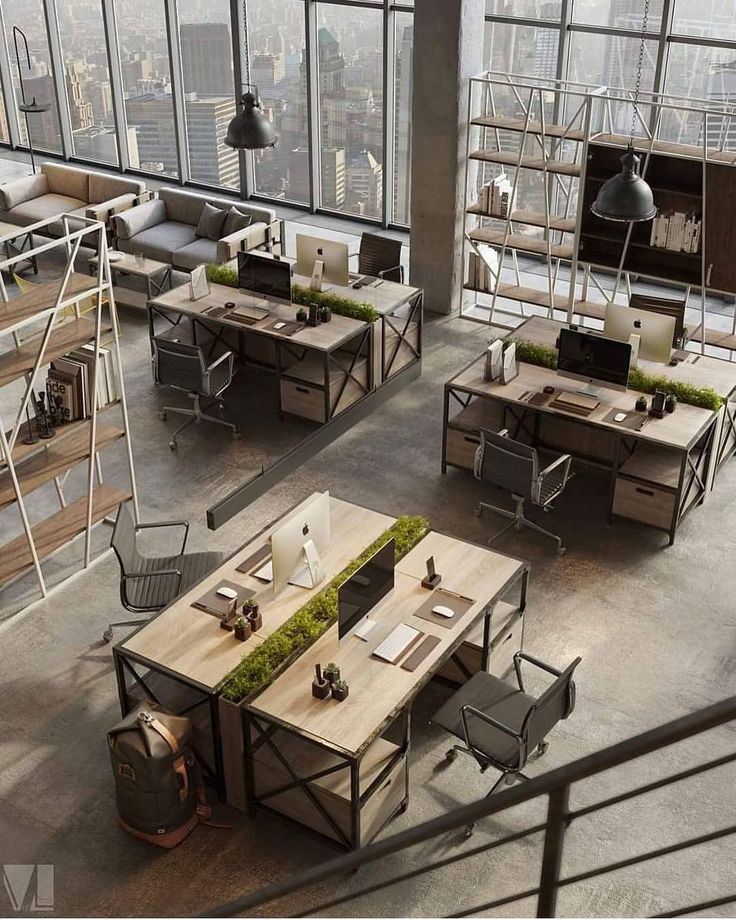
Choosing the Right Office Space Optimisation Tools
Technology is the backbone of modern workspace optimisation. The right tools help organisations collect insights, streamline workflows, and make smarter, data-driven decisions about space.
Room Booking & Scheduling Software
Modern systems make it simple to book meeting rooms, desks, and shared areas. An efficient booking tool ensures high-demand spaces are used effectively, reducing conflicts, meeting individual preferences and improving collaboration.
Space Utilisation & Analytics Tools
These solutions track occupancy and space usage patterns. By identifying when and where employees work, businesses can optimise layouts, reduce costs, and plan more efficiently. Usage data provides the foundation for smarter decisions and measurable ROI.
Workplace Design & Planning Tools
Digital floor planning platforms allow organisations to visualise layouts and model changes before implementing them. This helps teams create optimised office spaces that improve productivity and support hybrid work.
Facility & Asset Management Platforms
These systems monitor physical resources such as lighting, HVAC, and furniture. Combining facility data with usage analytics provides a complete view of operational efficiency and total costs across the site.
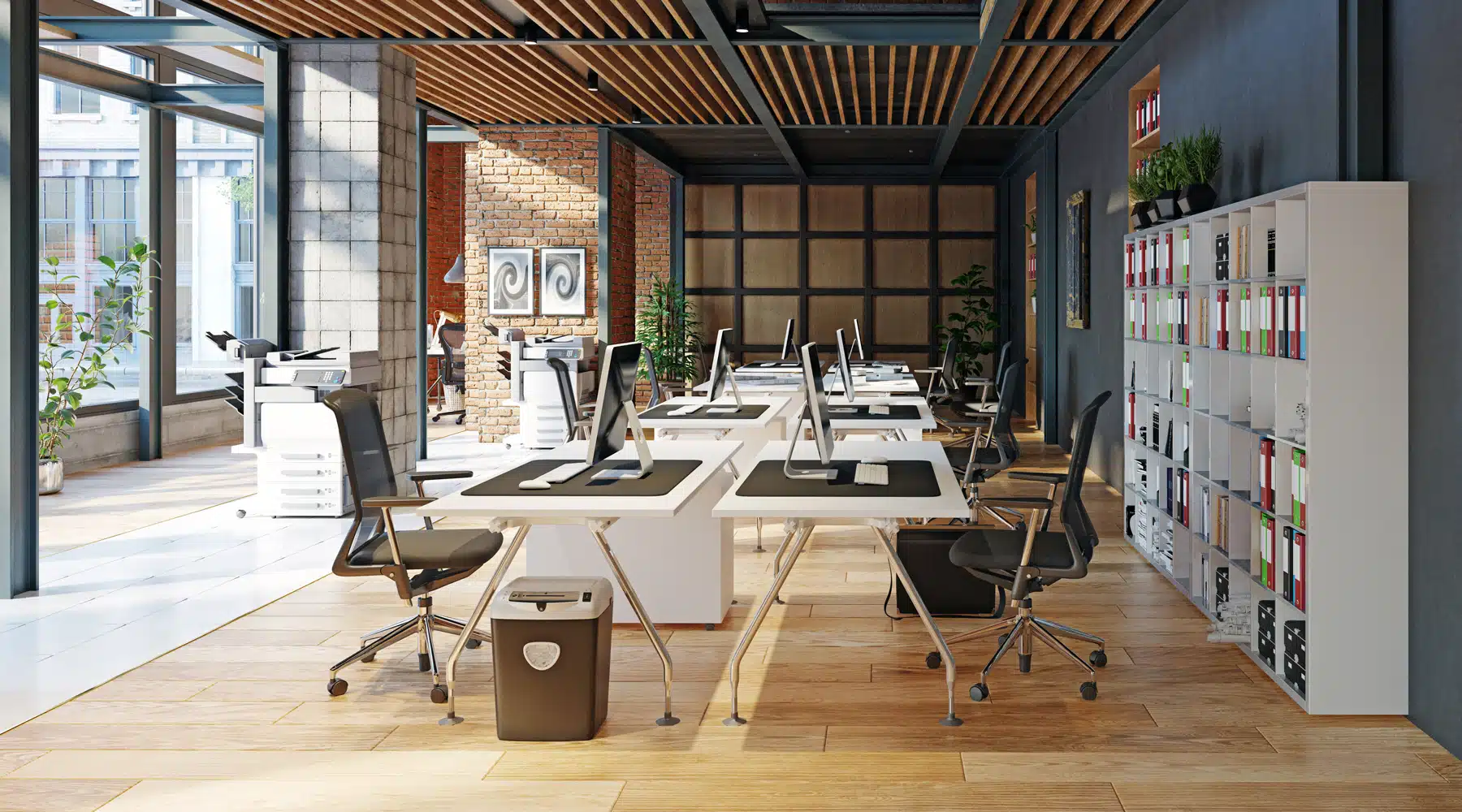
Conclusion: Build Smarter Workspaces That Drive Growth
It's not just about saving space — it’s about building a smarter, more agile work environment that supports long-term growth in the future. From modular office pods to intelligent booking systems, every decision should contribute to productivity, comfort, and collaboration, but should also fit in with your budget.
A practical , cost-effective approach
At Persy Booths, we believe in practical solutions that deliver results without unnecessary complexity or cost. Whether you’re upgrading meeting rooms, adding privacy pods, or rethinking your entire layout, we’ll help you make informed decisions that fit your business needs — with friendly advice, fast delivery, and minimal hassle. What's more, buying directly from manufacturers like us helps keep costs down — avoiding "middle man mark-up". The goal is simple: create environments where people and businesses can thrive.

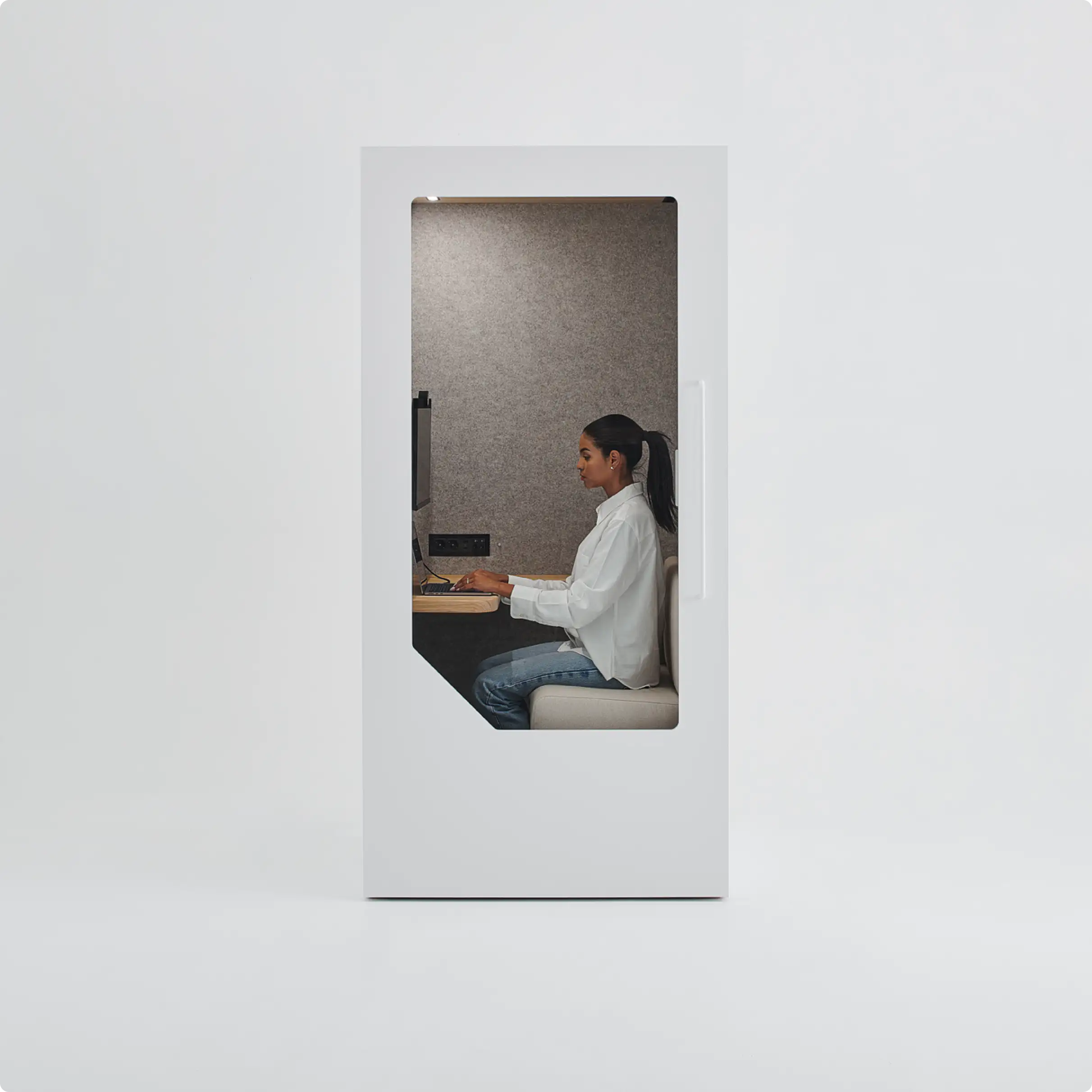
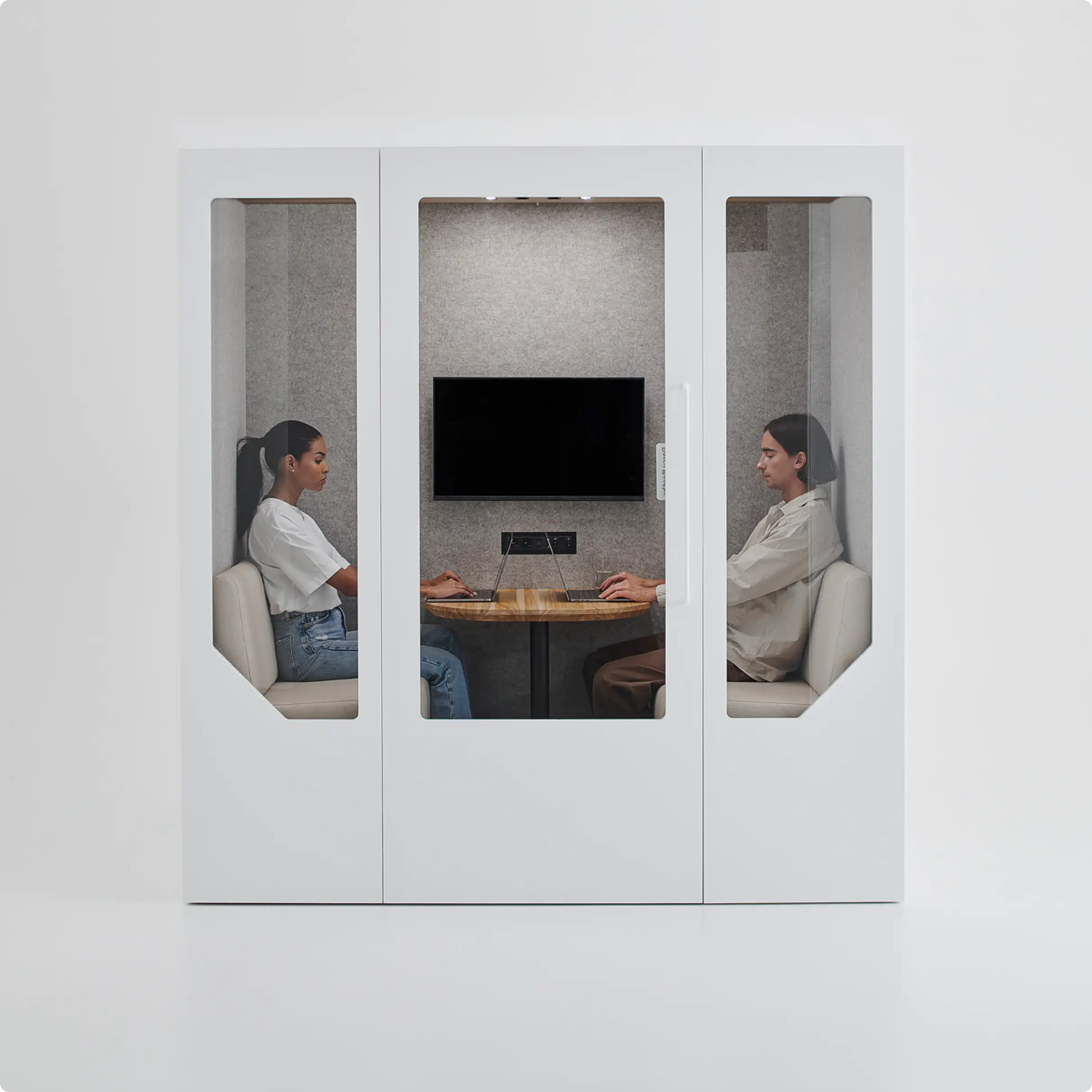
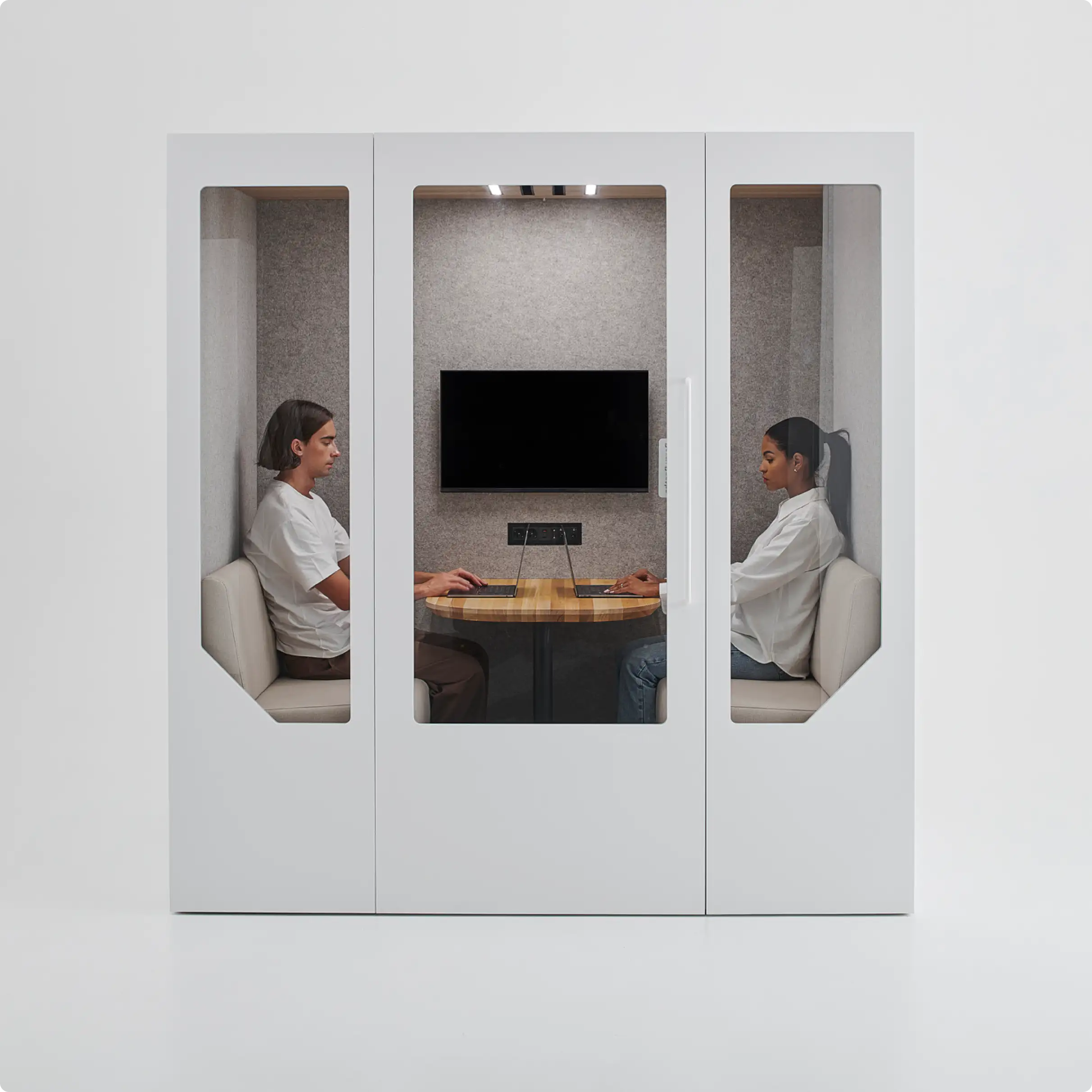




.avif)

